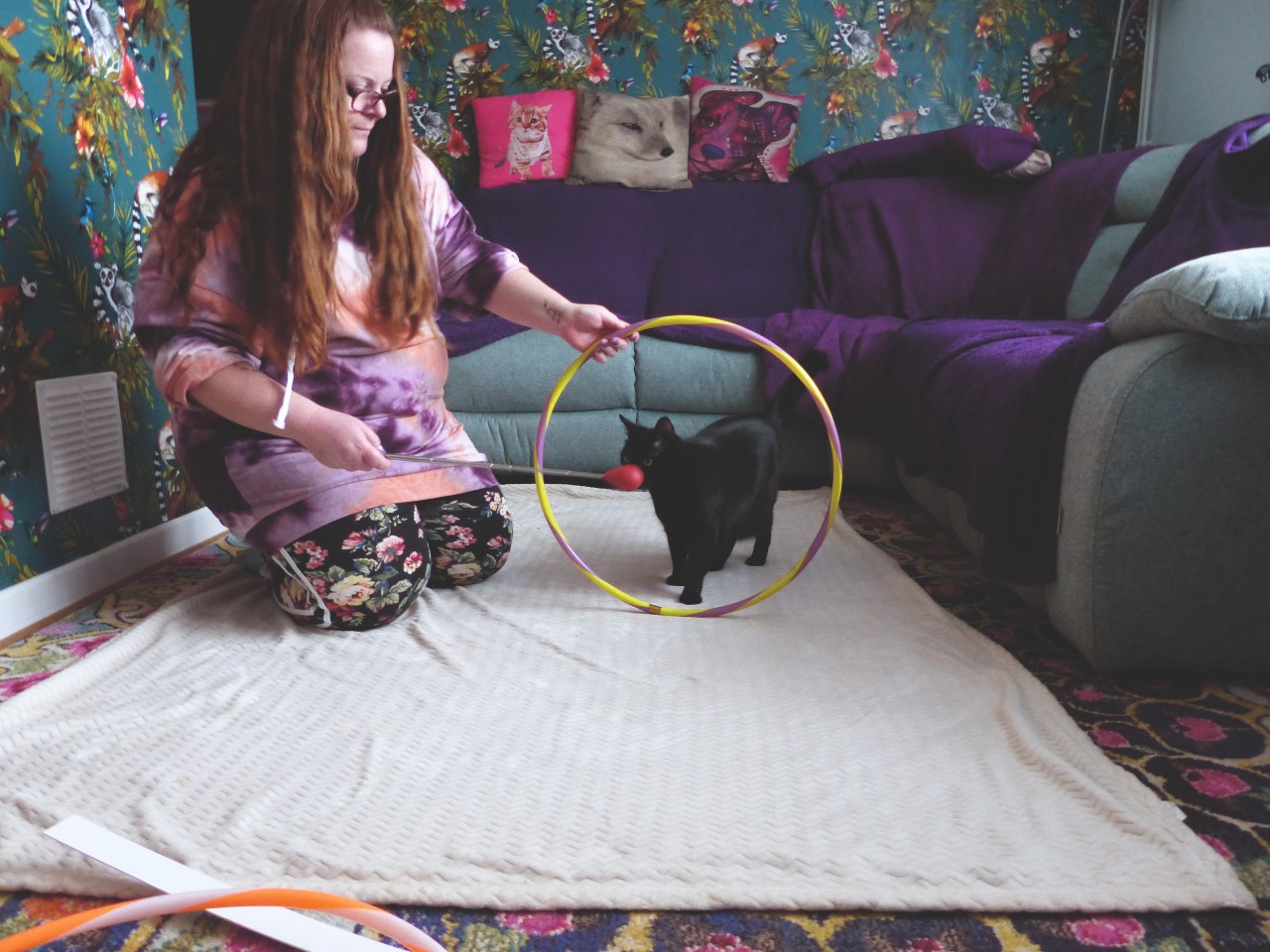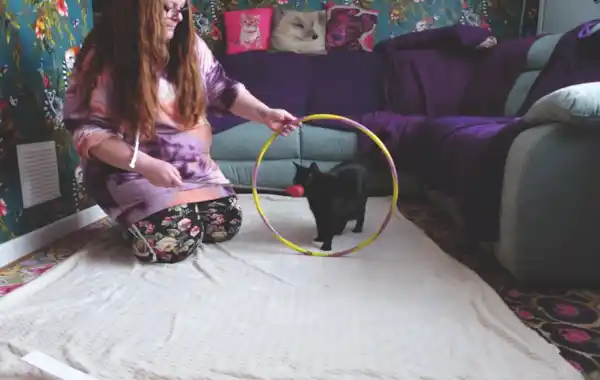It's a great way to have fun with your cat!
Target stick training is both fun and easy to teach. It offers a whole host of ways to have fun together and can even provide practical solutions to a variety of problems.
What is a target stick?
A target stick is a lightweight rod with a knob or ball at the end; you can make one yourself using a piece of dowel, a wooden spoon, or even a pencil. Once you’ve got started, it’s worth buying a telescopic one though, as this allows you to adjust the length so you can work either close up or at more of a distance.

What is target stick training for cats?
The aim is to teach your cat to first touch the end of the target stick with his nose, and then to follow it as you move it. It’s a simple idea which is fun and rewarding for both of you, and once your cat has got the hang of it, it has a wide range of uses including:
● Saving your back from lots of bending down to lure your cat into positions and behaviours you want to teach him.
● Numerous everyday practical applications such as teaching him to walk into a carrier, through a cat flap, or even persuading him to come out from under your bed.
● Teaching your cat to walk with you on a harness and leash.
● Learning to come when called, or to move to a specific spot, such as on to or off a cat tree or the sofa.
● Encouraging physical and mental exercise — you can even use it to guide him around an obstacle course.
Treats
You’ll need to provide an incentive in the form of tasty treats. Use things that your cat loves but doesn’t get very often. Treats should be tiny so he can eat them quickly, otherwise your training sessions will be slowed down by the need to wait for him to eat each treat. Small morsels will also stop him from feeling full too quickly and losing interest. Have your treats ready close to hand — a treat pouch (the sort dog people use) is ideal.
Teach your cat to touch the target stick
1. Hold the target stick out so that the end is about 1cm away and slightly to the side of your cat’s nose. He may be curious and want to investigate it straight away by touching it with his nose. If he does, either use a clicker if he’s used to one, or a word such as ‘Yes!’ or ‘Good!’ to mark the action, and immediately reward with a treat.
2. The aim is to encourage your cat to nudge the stick, not for you to touch his nose with it. If he doesn’t show much interest, try moving the target stick behind you for a few seconds, then presenting it again. Alternatively, try dipping the end of the target stick in some tuna juice, or adding a dab of yummy wet food, or cat-friendly pate to the end of the target stick. The instant he touches it, remember to mark the moment with your clicker or word and give him a treat from your hand. Don’t allow him to lick, mouth, or chew the stick, even if it does smell good enough to eat!
3. Repeat until your cat understands that nudging the target stick earns him a treat. Some learn very quickly, others need more time, spread over several sessions.
4. Once he’s grasped the idea, progress to moving the tip of the target stick; a little to the right, or to the left, or a little higher or lower than his nose, as well as directly in front of it. Keep it simple for him by only moving it a little way so it’s easy for him to reach.
5. When your cat will nudge the target stick every single time, add the verbal cue ‘Touch!’ saying it just before he touches the stick, and rewarding as normal when he does.
● If your cat does mouth, bite, or paw at the target stick, don’t click/reward. To reduce any frustration, throw a treat on the ground a short distance away from you to give him a break before re-presenting the target.
Following the target stick
Once your cat has learned to touch the target stick, it is a simple matter to teach him to follow it:
1. Present the target stick as before, but this time, as he moves to nudge it, slowly move it a bit further away in front of him so he has to stretch that little bit more in order to touch it. Remember to mark the moment with your clicker or word as usual and reward with a treat.
2. Repeat several times, gradually moving the target stick a little further away until he has to begin to move after it to be able to touch it. Mark and reward the moment he takes a step towards it — don’t ask too much too soon.
3. Build on this over several sessions until your cat is happy to follow the target stick for several steps, working up to longer distances.
Fun target stick training
Once your cat is happily following the target stick, you can use it to help teach him a few tricks including:
Spin: Use the target stick to teach your cat to move in a circle. Ask for just a few steps to start with and gradually build up to a whole circle. Once mastered in one direction, teach him to go round the other way.
Leg weave: Stand in front of him with your right leg forward and heel raised so your knee is slightly flexed, and use the target stick to lure him through, from front to back. Click as he passes through and toss a treat on to the floor just in front of your foot so he’s ready to turn back to repeat the manoeuvre. Repeat until he can fluently weave round your right leg, then teach him to do the same around your left one — then put the two together to create a full figure-of-eight weave.
Jump that: Set up some low solid obstacles and use the target stick to teach him to jump over them.
Tunnels and other fun obstacles: Why should dogs have all the fun with agility? When he can follow the target stick you can ask him to navigate tunnels and platforms or even jump through hoops.







